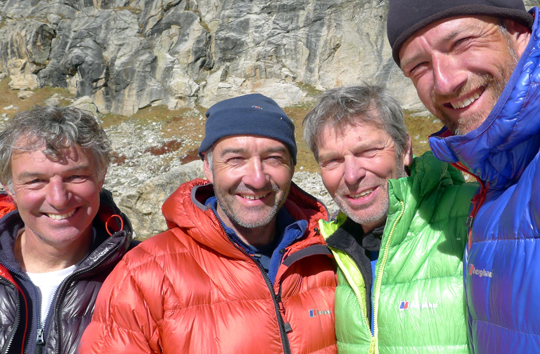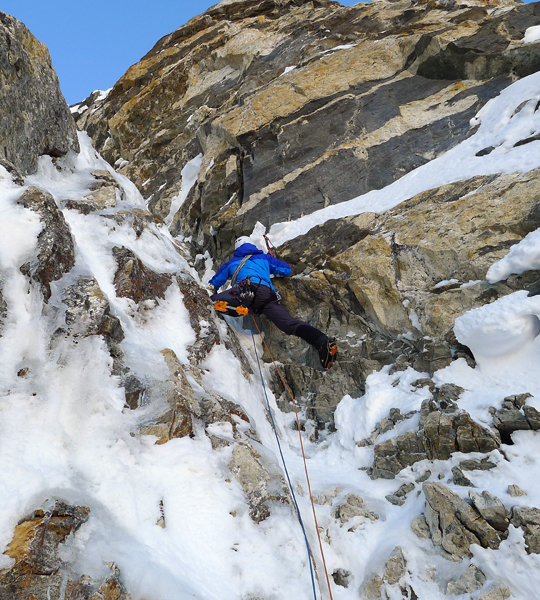
Political problems in Kashmir have put the Kishtwar Himalaya more or less off limits to foreigners since 1994. One team managed to get in and make an ascent of Cerro Kishtwar in 2011 but that was very much an isolated ascent, and by 2013 the valley containing our objective, Kishtwar Kailash, had not been visited by mountaineers for over 20 years.
At 6451m Kishtwar Kailash is one of the the highest peaks in East Kishtwar, and somehow it was overlooked in the rush to climb Kishtwar’s spectacular summits, which ended when the political curtains closed in 1993. In that year I was fortunate enough to climb Cerro Kishtwar with Steve Sustad, and from the summit we had an excellent view of Kishtwar Kailash. Since then it has been on my list of possible objectives.
The peak had been the goal of just one previous expedition when, in 1989, a Scottish team planned for an ascent but decided to climb less committing mountains after some crucial items were mislaid by airline baggage-handling staff. Effectively, then, Kishtwar Kailash had never been attempted although the few who had seen it close up commented favourably in regards to its attractiveness as a peak and the technical challenge it posed.
After positive signals about permits in early 2013, disturbances in the town of Kishtwar put matters in the balance such that we were not able to secure the required x-mountaineering visas until the day before we left the UK. Access was only permitted by the rather indirect route over the Rhotang Pass and then along the Chenab valley to Gulabgarh. We walked in from Gulabgarh but the lack of mountaineers over the last 20 years meant that mule tracks had not been well maintained. On more than one occasion we had to rebuild the track up the Darlang Nullah before our mules could continue. In all, it took eight days to travel from the UK to our base camp, which is a lot of time in relation to the four weeks we had off work.

Base camp was set up in the Chomochior Nullah at about 4100m. We spent a few days acclimatising up to about 5600m in indifferent weather and then returned to base camp to stock up on food and get ready to have a go at Kishtwar Kailash. With only one previous mountaineering expedition having visited this valley, it was perhaps not surprising that we noticed plenty of other interesting looking objectives too.
Paul Ramsden and I were pleased to find that the route we took up Kailash was even more varied and spectacular than we had expected. In perfect weather we started out by climbing an icefall and couloir to a fine bivouac where we could pitch our little tent on the south edge of the face. From here a rising traverse on snow and ice led to delicate and insecure climbing on thinly iced slabs with huge monolithic walls above.
After another bivouac, an ice smeared couloir led through the walls and gave memorable mixed and pure ice climbing. Day 5 continued with more weaving around spectacular rock walls on thinly iced slabs until we were able to gain access to a shallow couloir leading to the headwall. An open bivouac in perfect weather then put us in a perfect position to reach the summit the next day.

At this point we were higher than just about every other peak in the area and were able to spend a very fine evening soaking up the late sun and generally enjoying being high on this unclimbed mountain. A lightening storm nearby added interest overnight, but in the morning there was just half a day of tricky mixed climbing on the headwall before we reached the top midway through the morning of our sixth day out from base camp. There was no wind, the skies were almost clear and we spent 30 minutes or so admiring the view and taking photographs.
We descended by abseiling more or less down our line of ascent using Abalakov anchors for the vast majority of the way. We managed to descend a long way on summit day and then, via a very long day, reached base camp late the following day.
We found it a most enjoyable and rewarding climb in a beautiful part of the Himalaya.